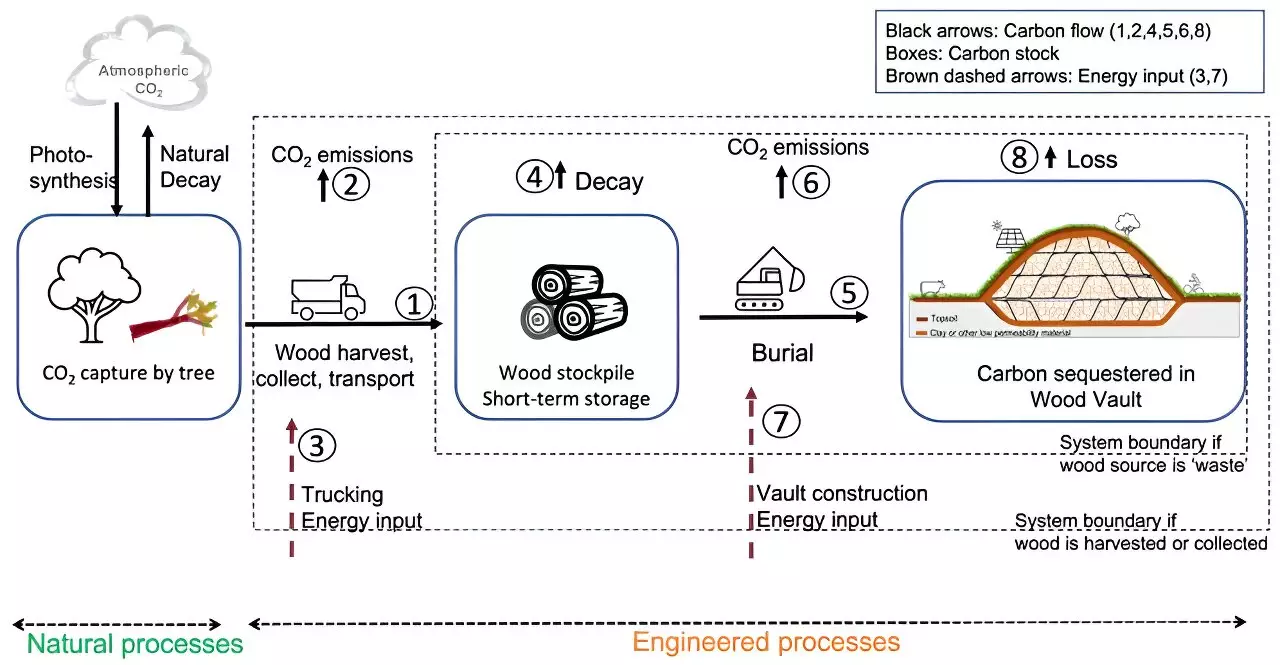In a groundbreaking study, researchers from the University of Maryland, in collaboration with Canadian agricultural scientists, are highlighting a cost-effective method for mitigating climate change by storing carbon in the ground. Their findings, published in the prestigious journal Science, unveil the potential of burying biomass as a sustainable solution to reduce atmospheric carbon dioxide levels. The urgency of addressing global warming cannot be overstated, as unchecked greenhouse gas emissions threaten the planet’s ecological balance and human livelihoods.
Greenhouse gas emissions, particularly carbon dioxide, are the primary culprits of climate change, leading to extreme weather patterns and ecological disruptions. Current mitigation efforts primarily focus on reducing emissions, but experts understand that reversing the impacts requires not just reduction but also removal of existing carbon in the atmosphere. Traditional methods of carbon capture and storage are often prohibitively expensive and complex, necessitating the exploration of alternative strategies that are both effective and affordable.
The research team investigated a log found buried under a clay layer in Canada, which had remarkably preserved its organic material over nearly four millennia. This log served as a case study, demonstrating that carbon absorbed by living vegetation can be effectively captured if those materials are buried after death rather than left to decompose. The preservation method attributed to clay offers a unique opportunity for scientists to analyze historical carbon capture in natural settings. Their examination revealed that the log retained an astounding 95% of its initial carbon content, presenting a compelling argument for the practicality of biomass burial.
One of the standout aspects of this study is the economic analysis conducted by the researchers. By comparing the costs associated with burying biomass—ranging from $30 to $100 per ton—to other carbon sequestration methods, which can be $100 to $300 per ton, the researchers propose a financially viable solution to carbon management. This shift could significantly democratize access to effective carbon capture technologies, enabling widespread adoption by various sectors, including agriculture and forestry.
Furthermore, the researchers estimate the potential for sequestering up to 10 gigatons of carbon annually through biomass burial, a figure that could substantially contribute to global climate goals. This scale of carbon removal not only fosters resilience against climate change but also supports biodiversity and soil health through enhanced organic matter input.
As climate change continues to escalate, innovative approaches such as burying biomass emerge as critical components of an effective response strategy. The findings from this research not only illuminate a path forward for cost-effective carbon sequestration but also underscore the importance of harnessing natural processes for climate resilience. Collaborative efforts among scientists, policymakers, and stakeholders will be essential to implement these strategies on a global scale. Moving forward, the integration of biological approaches into climate action plans could prove vital in securing a sustainable future for our planet.



Leave a Reply